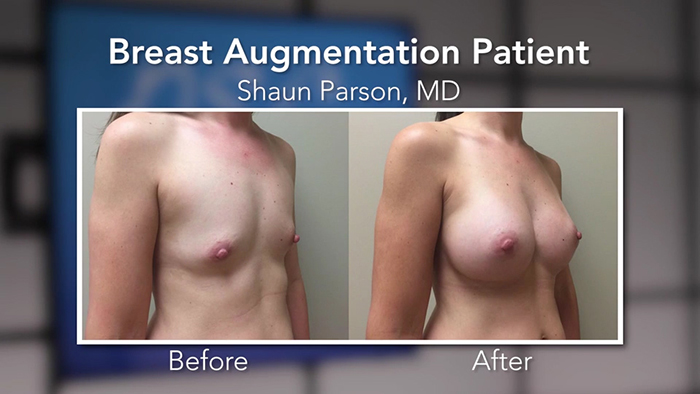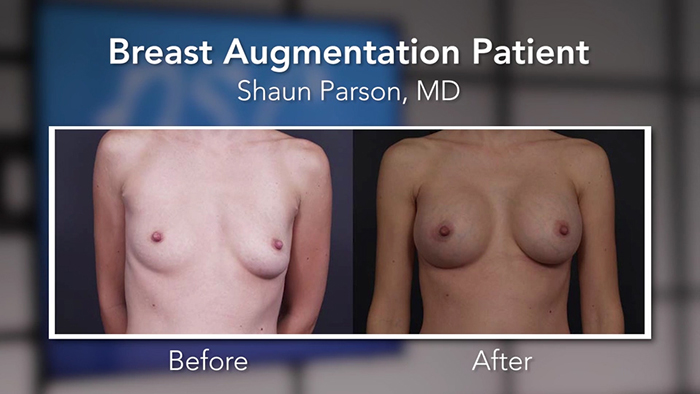The decision to have a breast augmentation is only the beginning of the journey to upgrade your chest. Before you even step foot in a consult room, chances are you’ve been bombarded with information.
The choices ahead are many: breast implant type, implant size, incision placement, implant placement – above or below the muscle, etc. Dr. Shaun Parson of Scottsdale addresses many of the decisions patients will make and lends some advice.
What’s Right for THEM May Not be Right for YOU
Your sister, or maybe your best friend, has implants and loves them. The fact that they have a round implant and are happy with the result does not mean that a round implant is the right choice for you. Dr. Parson uses an analogy of shoe shopping to drive home the point:
When you see a beautiful shoe at the shoe store, regardless of how well-made or pretty that it is, if it doesn’t fit your foot, it’s not the right shoe for you.
The right implant for you will fit your lifestyle, your body shape, and will align with the look you are hoping to achieve. “To get the best result, we need to find the best implant that is specific for you,” Parson explains.
With Breast Augmentation, Describe the Type of Look YOU want
Patients may not know what type of implant is right for them yet, but they do know what kind of look they would like to end up with. They may be looking for a more natural look, in which case a shaped implant could be the right choice for their chest. On the other hand, if a patient desires more of an augmented, “push-up bra” type of look, they may decide to go with a round implant.
Keep in mind that “natural” can mean very different things to different people. The better patients are able to explain their goals, the better equipped their surgeon will be to guide them.
Bra sizes vary from brand to brand and are not the most accurate way to express a desired size. Providing multiple examples however can give your surgeon a better sense from which to guide you to the right implant. “It’s a thoughtful dialogue between patient and doctor,” says Parson of the planning process. “I can ask them what they want, and I can help them understand what we need to do to get them to that point.”
If the Surgeon Isn’t Listening, Find Another Surgeon
“Long gone are the days when you go to the doctor and they tell you what you’re supposed to have,” shares Parson. The decision making process is not one sided. As the patient, you will share your desires and your goals. The surgeon will then educate you on the options and help you make a decision that makes sense for you. Finding a surgeon who will take the time to both listen and explain is the key to arriving at your perfect outcome.
VIDEO TRANSCRIPT
Parson: If you go to the shoe store, you may find a great shoe and it frankly is really, really nice and really pretty, but it doesn’t fit your foot. And not every implant is going to fit your chest. So to get the best result, we need to find the best implant specific to you.
Parson: When we just focused on implants – not implant volume – but what type of implant. There are saline implants, gel implants, round implants, smooth implants, shaped implants.
Parson: Based on you, based on your photos, based on what you want. What type of look do you want? Do you want a more augmented look? Do you want more of a natural look? Do you want a B size? Do you want a C size? It’s a thoughtful dialogue between the patient and doctor so that I can ask them what they want and then I can help them understand what we need to do to get them to that point.
Parson: Long-gone are the days when you go to the doctor and they tell you what you’re supposed to have. My job is not to tell them what to do, my job is to explain what’s going to make sense so they can decide what to do.
















Facebook
Twitter
Instagram
YouTube
RSS